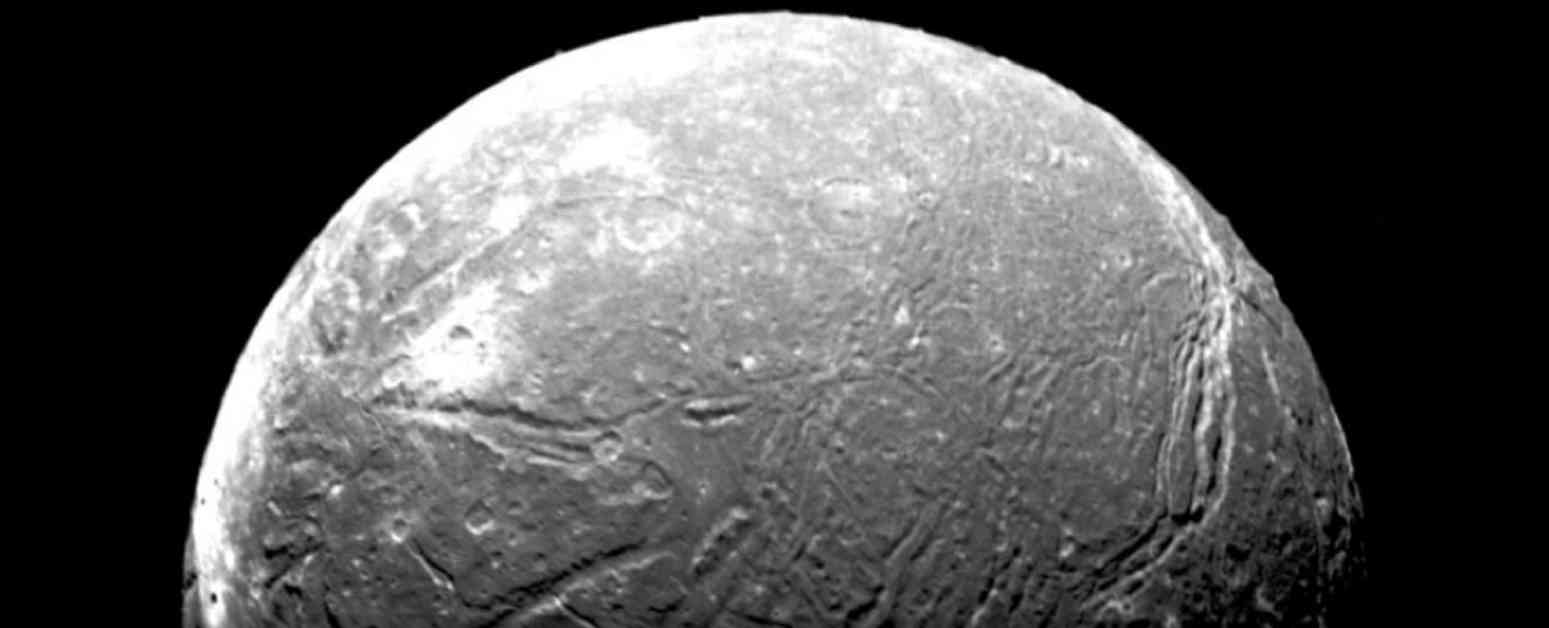A hidden ocean has been discovered in our solar system on Ariel, one of Uranus’ moons. This shocking revelation was made possible by recent observations from the James Webb Space Telescope, which detected carbon dioxide ice on the moon’s surface. The presence of this ice on Ariel’s trailing hemisphere suggests the existence of a subsurface ocean.
Ariel, discovered in 1851, is known for its icy surface and diverse geological features including canyons, ridges, faults, and valleys. Cryovolcanism, a process that drives constant resurfacing, has made Ariel the brightest of Uranus’ moons. The discovery of significant amounts of carbon dioxide ice on the moon’s surface has surprised the scientific community.
While the most popular theory previously suggested that the carbon dioxide on Ariel’s surface was coming from interactions with charged particles in Uranus’ magnetosphere, a new study published in the Astrophysical Journal Letters proposes an alternative explanation. The study suggests that the carbon dioxide molecules on Ariel are actually coming from a subsurface liquid ocean.
Further analysis by astronomers using JWST revealed that Ariel has some of the most carbon dioxide rich deposits in the solar system. In addition, signals from carbon monoxide were also detected, which is unexpected given the average temperatures on the moon. The presence of carbonate minerals further supports the hypothesis of a subsurface ocean as the source of these deposits.
To confirm these findings and uncover more mysteries of Ariel, a future space mission to Uranus will be necessary. Such a mission would explore the moons of Uranus, including Ariel, and potentially reveal the origin of the carbon oxides on the moon’s surface. With only 35% of Ariel’s surface imaged by Voyager 2, there is still much to learn about this fascinating moon and its hidden ocean.












